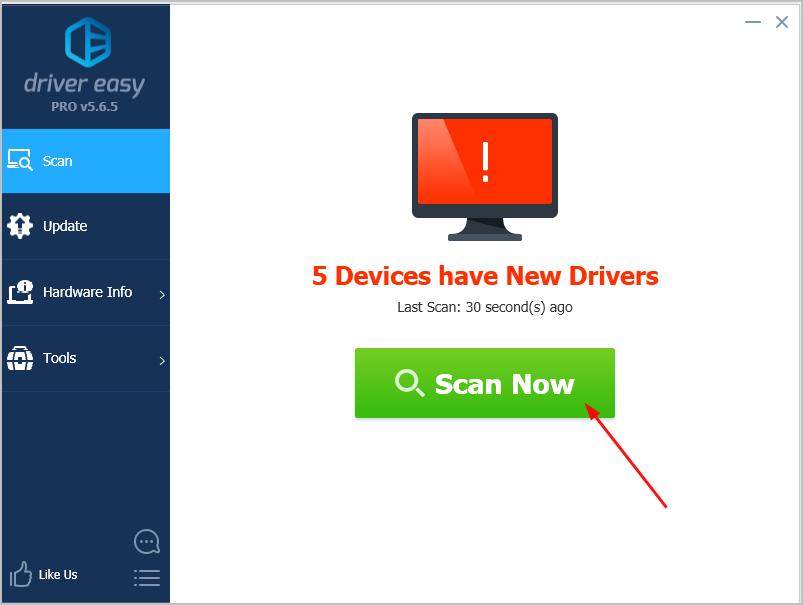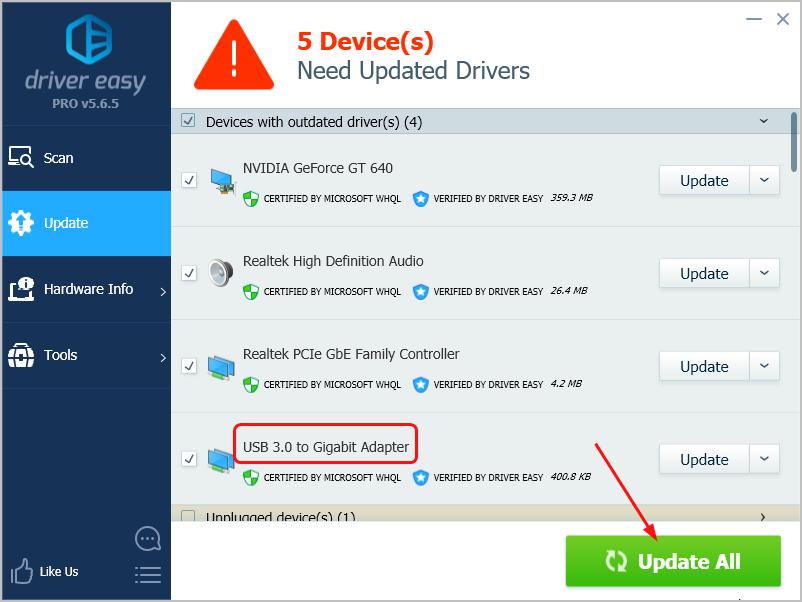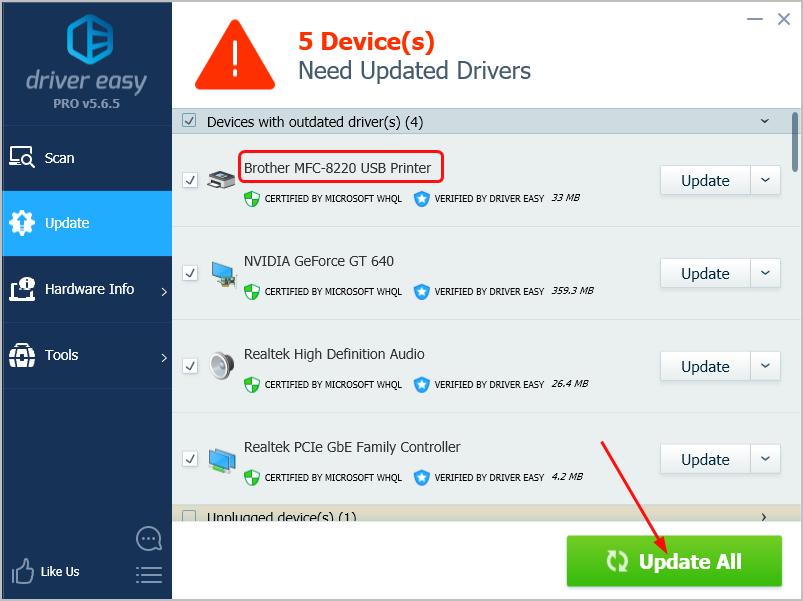
When you try to connect your USB printer to your new computer, you might properly get the error: USB Composite Device can’t work properly with USB 3.0. Don’t worry. It’s usually not a hardware issue, and you’re very likely to fix it through the following methods. Read on and see how…
What your might concern…
USB 3.0 is a much more dependable and way faster USB (Universal Serial Bus) standard. Today most new computers and other devices support USB 3.0.
However, most USb 3.0 ports are backward compatible. That is to say, your USB 2.0 printer should work with USB 3.0 without problems.
When you receive the USB Composite Device can’t work with USB 3.0 or something similar, usually it’s a driver problem. Follow the solutions here to try to solve your problem.
Try these fixes:
Solution 1: Update your USB controller driver
If your USB controller driver is corrupted, old or missing, the error probably occurs.
You can update your USB controller driver either manually or automatically.
Option 1 – You can go the manufacturer’s website for your brand computer or USB controller, then search for the latest USB controller corresponding with your specific flavor of Windows version (for example, Windows 64 bit) and download the driver manually.
Once you’ve downloaded the correct drivers for your system, double-click on the downloaded file and follow the on-screen instructions to install the driver.
Option 2 – If you don’t have the time, patience or computer skills to update the USB controller driver manually, you can do it automatically with Driver Easy.
Driver Easy will automatically recognize your system and find the correct drivers for it. You don’t need to know exactly what system your computer is running, you don’t need to risk downloading and installing the wrong driver, and you don’t need to worry about making a mistake when installing.
You can update your drivers automatically with either the FREE or the Pro version of Driver Easy. But with the Pro version it takes just 2 clicks:
Download and install Driver Easy.
Run Driver Easy and click the Scan Now button. Driver Easy will then scan your computer and detect any problem drivers.

Click Update All to automatically download and install the correct version of all the drivers that are missing or out of date on your system (this requires the Pro version – you’ll be prompted to upgrade when you click Update All).
Note: You can do it for free if you like, but it’s partly manual.
Once you’ve update your USB controller driver to the latest version, restart your computer to see if your printer is connected successfully.
Solution 2: Update your printer driver
If your USB controller driver is without problem, then go on to check your printer driver.
Similar to update your printer driver, you can get the latest printer driver from your printer manufacturer’s website or, you can also get it automatically through Driver Easy.

Solution 3: Adjust your BIOS setting
There’s one setting called Legacy USB Support, which enable you connect older USB device with the USB 3.0 port. If it’s not turned on, you might also get the error.
Follow to enable Legacy USB Support:
- Restart your computer. Immediately press the function key, like F2, to enter the BIOS of your system.The specific key to Enter BIOS commonly is F1, F2, Esc, F10, etc. You might see a message, like Press F2 to STEUP, telling you the correct key when your system reboots.
- Once your system boots into BIOS, press the right arrow key on your keyboard, to select Peripherals. Proceed to press the down arrow key to select USB Configuration, then press Enter.

- On the USB Configuration pane, press the down arrow key to select Legacy USB Support. Then press Enter to set it to Enabled.

- Save your setting and exit BIOS.
Your computer would then boot into the normal system. See if you can use your printer.
That’s it. You might be able to use your printer with your Windows computer now. Feel free to comment below if you have any questions.





